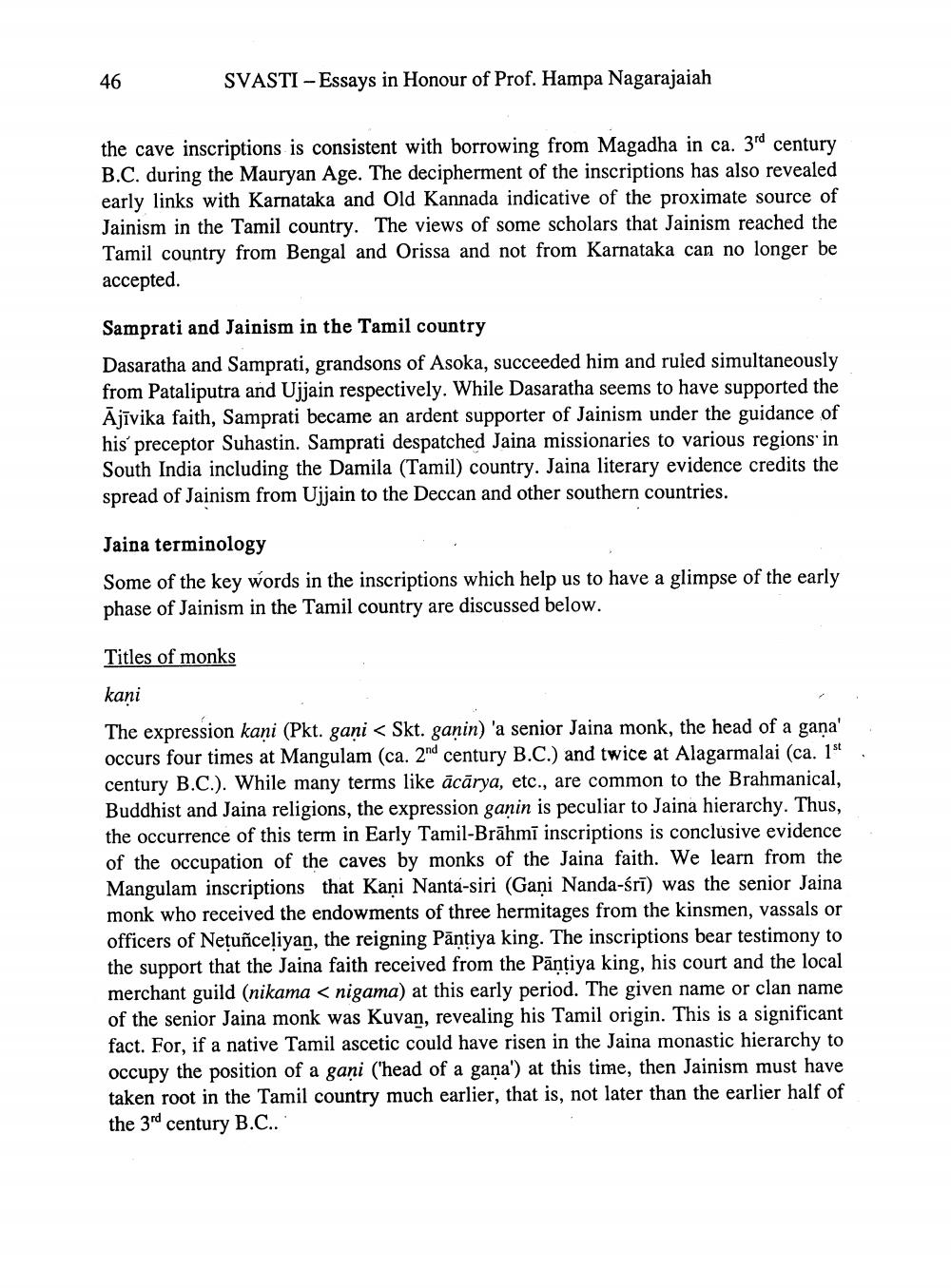________________
46
SVASTI Essays in Honour of Prof. Hampa Nagarajaiah
the cave inscriptions is consistent with borrowing from Magadha in ca. 3rd century B.C. during the Mauryan Age. The decipherment of the inscriptions has also revealed early links with Karnataka and Old Kannada indicative of the proximate source of Jainism in the Tamil country. The views of some scholars that Jainism reached the Tamil country from Bengal and Orissa and not from Karnataka can no longer be accepted.
Samprati and Jainism in the Tamil country
Dasaratha and Samprati, grandsons of Asoka, succeeded him and ruled simultaneously from Pataliputra and Ujjain respectively. While Dasaratha seems to have supported the Ajivika faith, Samprati became an ardent supporter of Jainism under the guidance of his preceptor Suhastin. Samprati despatched Jaina missionaries to various regions' in South India including the Damila (Tamil) country. Jaina literary evidence credits the spread of Jainism from Ujjain to the Deccan and other southern countries.
Jaina terminology
Some of the key words in the inscriptions which help us to have a glimpse of the early phase of Jainism in the Tamil country are discussed below.
Titles of monks
kani
The expression kani (Pkt. gani < Skt. ganin) 'a senior Jaina monk, the head of a gana' occurs four times at Mangulam (ca. 2nd century B.C.) and twice at Alagarmalai (ca. 1" century B.C.). While many terms like ācārya, etc., are common to the Brahmanical, Buddhist and Jaina religions, the expression ganin is peculiar to Jaina hierarchy. Thus, the occurrence of this term in Early Tamil-Brähmi inscriptions is conclusive evidence of the occupation of the caves by monks of the Jaina faith. We learn from the Mangulam inscriptions that Kani Nanta-siri (Gani Nanda-śri) was the senior Jaina monk who received the endowments of three hermitages from the kinsmen, vassals or officers of Netunceliyan, the reigning Päntiya king. The inscriptions bear testimony to the support that the Jaina faith received from the Pāņtiya king, his court and the local merchant guild (nikama < nigama) at this early period. The given name or clan name of the senior Jaina monk was Kuvan, revealing his Tamil origin. This is a significant fact. For, if a native Tamil ascetic could have risen in the Jaina monastic hierarchy to occupy the position of a gani (head of a gana) at this time, then Jainism must have taken root in the Tamil country much earlier, that is, not later than the earlier half of the 3d century B.C..




